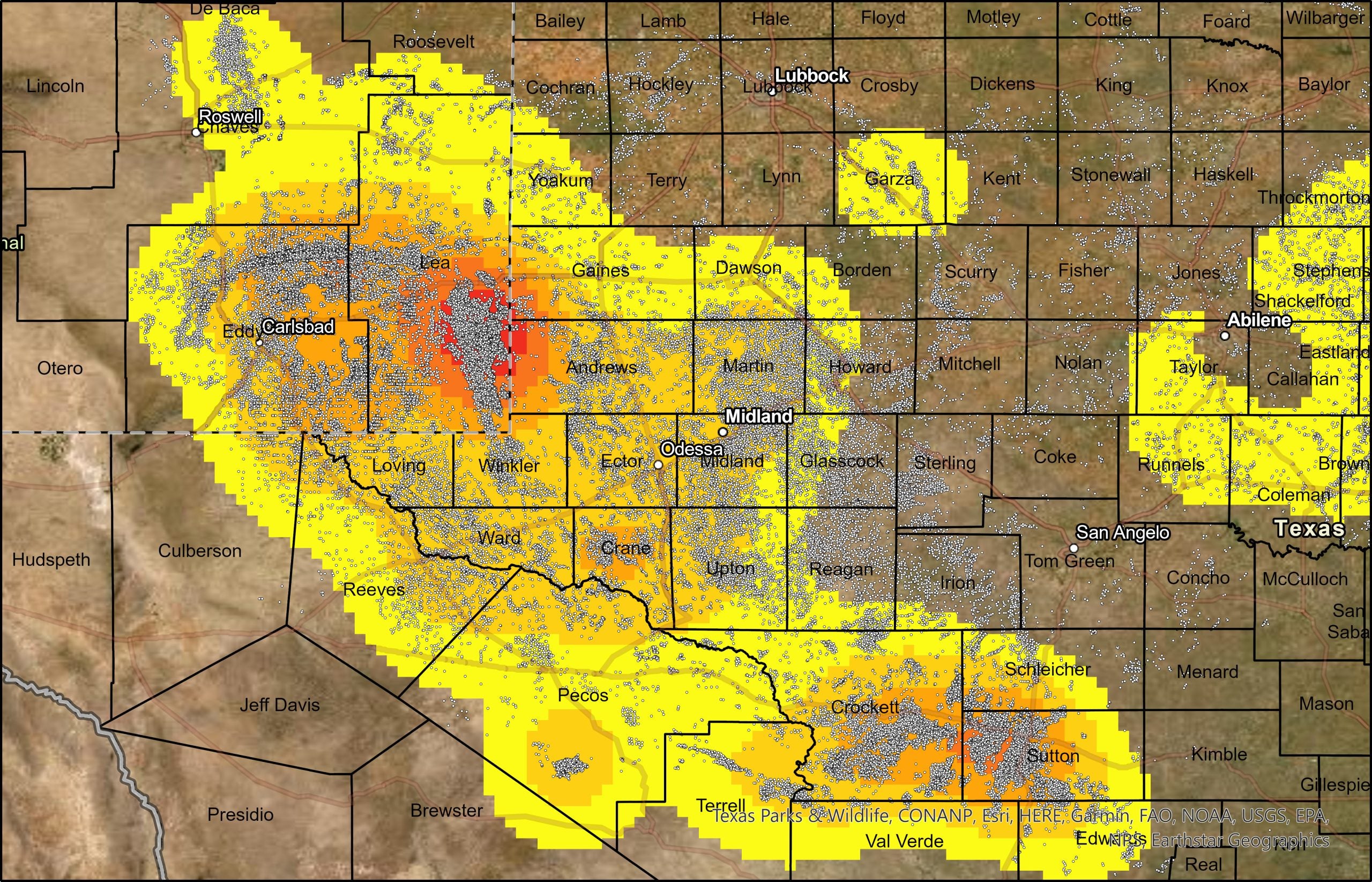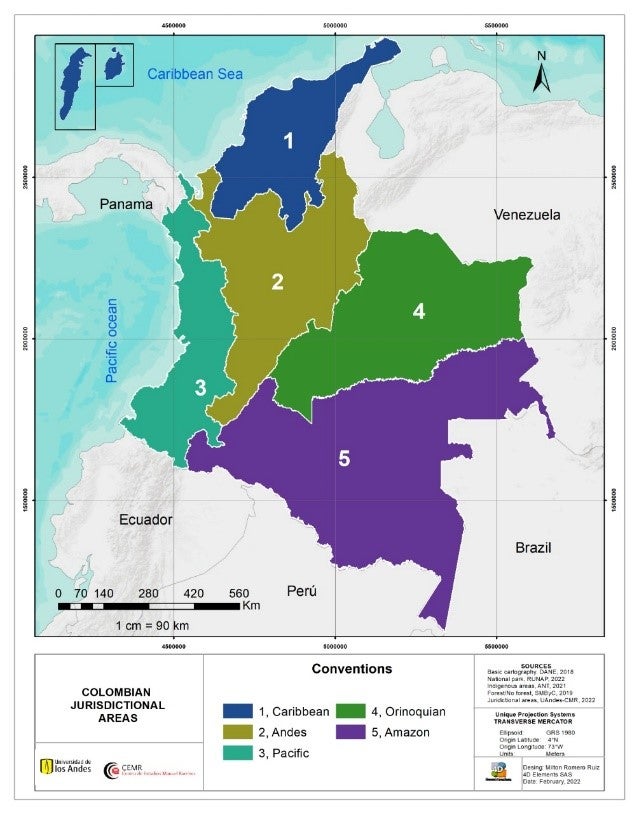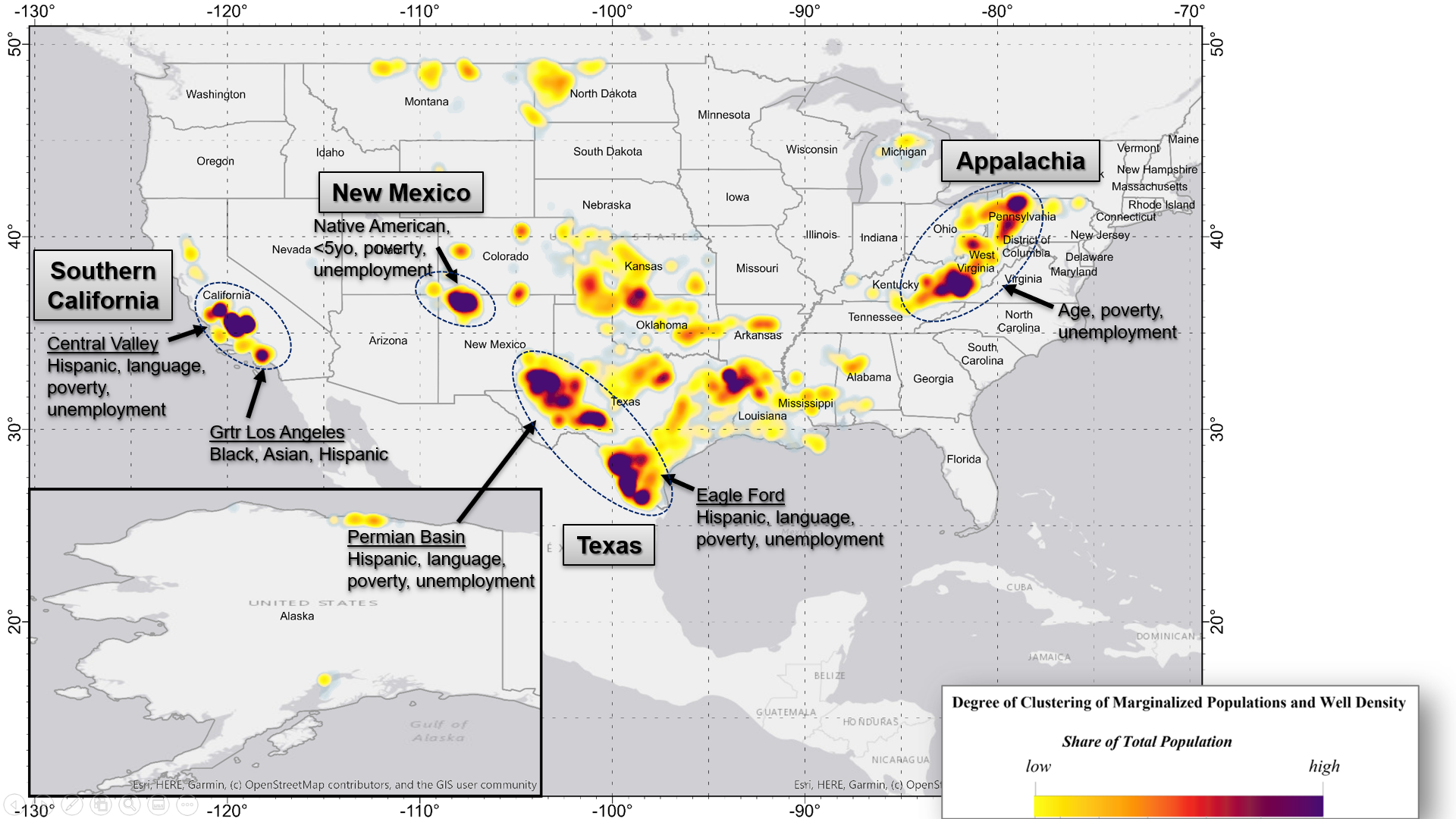Last Monday, Environmental Defense Fund and Texas A&M University unveiled the Climate Vulnerability Index (CVI), a robust, data-driven mapping tool built to highlight how drivers of cumulative vulnerability and exposure to climate impacts disadvantage communities across the U.S. Combining 184 sets of data, or “indicators,” to rank more than 70,000 U.S. Census tracts, the CVI offers the most complete look at lived experience down to the neighborhood level. Read More
Market Forces
How EDF’s new, groundbreaking EJ mapping tool can drive equitable policies and investment
What can New Zealand’s forestry sector tell us about carbon pricing policy?
New Zealand is currently reconsidering how its forestry sector can contribute to meeting its long-term climate change targets, and what this means for its emissions trading scheme (NZ ETS). A recent paper from researchers at Motu Economic and Public Policy Research and the Environmental Defense Fund sheds light on New Zealand’s innovative treatment of forestry in the NZ ETS, its impacts so far, and questions about where to go from here. Read More
“Nothing about us without us: The case of JREDD+ in Colombia.” The importance of including all stakeholders, especially affected communities, at the decision-making table.
This blog was authored by Environmental Defense Fund economist Luis Fernández Intriago and Universidad de Los Andes professors Jorge García López and Julián Gómez Gil.
The saying “Nothing about us without us” is widely used among Indigenous Peoples and Local Communities to emphasize the importance of involving them in policies that govern their territories and communities. The expression serves as a call to action, highlighting that those affected by specific issues should be included in making policy decisions around them.
However, policymakers and researchers consistently decide on policy design and construct models without consulting and considering the opinion of the affected communities and key stakeholders. Efforts to stop deforestation are a clear example of this: new policies go into place without any input from communities that rely on forests for their livelihoods, cultures, or basic survival. These local and Indigenous communities are an untapped source of wisdom, leadership, and capacity to support efforts to conserve rainforests.
To remediate this, Environmental Defense Fund, Universidad de Los Andes, and the Centro de Estudios Manuel Ramírez, right since the beginning of the project, started an engagement process in Colombia to demonstrate how engaging key local and Indigenous stakeholders could lead to better policy design to protect forests in the country.
Why Colombia?
Colombia faces enormous challenges with deforestation: 184,000 hectares per year of natural forests were destroyed between 2017 and 2021. Deforestation accounts for 33% of the country’s total climate-warming greenhouse gas emissions. Thus, halting deforestation is critical for achieving the country’s Paris Agreement commitments (called “Nationally Determined Contribution” or NDC).
As in many other countries, the AFOLU (Agriculture, Forestry, and Other Land-use) sector is not subject to regulations in Colombia. However, this presents an excellent opportunity for the Colombian government to leverage private finance from national sources—such as through the upcoming Colombian Emissions Trading System[1] , which must be implemented by 2030—and international sources —such as the LEAF Coalition— using jurisdictional REDD+ (JREDD+) crediting. JREDD+ programs extend the REDD+ framework for sustainable forest management and conservation by addressing deforestation at the regional or ‘jurisdictional’ level—protecting forests across wide regions instead of plot-by-plot and even resources.
Climate mitigation is now a top priority for many individuals, governments, and corporations, creating strong demand for ways to stop deforestation in tropical forest countries in high-integrity ways rapidly. Our research finds that government funding required to reduce deforestation levels consistent with Colombia’s NDC could drop from $900 to $75 million when national and international private finance is harnessed.
The Study
Our study aimed to identify inclusive, equitable ways to include JREDD+ in Colombia’s climate mitigation policies. We established three parallel and interconnected pillars: first, we focused on engagement with primary stakeholders. Second, we constructed a model to illustrate how JREDD+ may help Colombia meet its NDC target cost-effectively while benefiting local communities. Third, we prepared a policy design that government can use as a guideline to integrate these approaches.
Engagement
At the beginning of the project, we knew we had to start by engaging with stakeholders to explain JREDD+. Our ultimate goal was to include the feedback and reflect relevant stakeholders’ needs—including the national government and public institutions, Indigenous groups, smallholder’s associations, NGOs, and educational institutions—in our results. We knew that communication between our research group and people who could be interested or potentially affected by the research project was crucial if we were to produce and share credible and legitimate knowledge. The knowledge acquired through these interactions can set the stage for an effective and equitable JREDD+ program in Colombia.
In 2022, we hosted four engagement sessions in Tena (April 23 & 24, Cundinamarca), Florencia (May 5 & 6, Caquetá), Bogotá (October 14), and Mocoa (October 26 & 27, Putumayo). These sessions focused on the participation of representatives of the Amazon Indigenous peoples (OPIAC, OZIP, ACILAPP, etc.[2]), other local communities and land users (farmers, cattle ranchers, and smallholders associations), NGOs (Amazon Conservation Team, WWF, Natura Foundation, Fondo Patrimonio Natural, etc.), private organizations (Emergent, Amazon Global, Permin Global, ALLCOT, Asocarbono, etc.) and national and subnational government institutions (Ministry of Environment and Sustainable Development, Sinchi Institute, Corpoamazonía, etc.). During these community meetings, we worked hard to improve participation but also set realistic expectations, and engaged in open-ended discussions where training was provided to the attendees regarding the formulation of projects of conservation, carbon markets, REDD+ projects, JREDD+ programs, guidelines of the ART-TREES standard and the operation of the LEAF call for proposals, through technical presentations and educational activities, and promoting the constant participation of the actors to create scenarios for debate and resolution of doubts.
In the same way, these spaces were used to formulate questions to the different actors, which were resolved both through open debate dynamics and through collaborative work activities, taking advantage of a closer and more direct dialogue with each one of them and a greater availability of time to delve into topics of interest. This form of participation was very well received by the Indigenous Peoples, who invited the work team to implement similar activities more frequently and in the most remote territories so that capacity building can be held and the local context is better perceived.
Given the scale of a JREDD+ program, the interaction and negotiation between local actors, institutions, intermediaries, and current individual REDD+ projects are essential. According to the discussion with stakeholders, a common problem associated with the participation of key actors and interested parties in individual REDD+ projects is that these actors tend to be treated as beneficiaries rather than partners. As a result, local communities and interested parties perceive that the design of incentives, local capacity, delivery mechanisms, transparency provisions, and distribution are only partially fair. This led us to consider fairness, representation, and transparency as critical components of policy design.
Modeling
We modeled a mechanism to integrate the potential funds generated with a JREDD+ and a national emissions trading system (ETS) to accelerate the reduction of emissions from deforestation. Mainly, we considered a scenario under which Colombia applies the LEAF coalition model on a national scale of a JREDD+ at the national level. At the same time, to ensure representativeness, bargaining power, effective resource administration, and a fair distribution of benefits, we proposed an internal administrative division of Colombia into five jurisdictions: 1. Caribbean region; 2. Andean region; 3. Pacific region; 4, Orinoquía region; and 5. Amazon region.
Our modeling revealed that integrating a JREDD+ program with a National ETS could be a cost-efficient mechanism to reduce the externality costs and disincentivize the overall GHG emissions of Colombia following the country’s regulatory framework, the emissions trajectory, and the mitigation objectives. These mechanisms could be used to generate and allocate economic resources to ensure efficient emissions mitigation, the incorporation of safeguards (such as environmental education), and the minimization and/or compensation of adverse socio-environmental interventions. In addition, the modeling results imply the generation of co-benefits (economic, social, and environmental) that contribute to the development of ethnic communities, local communities, and other private land users.
Policy Design (Results)
After receiving input from stakeholders and results from our model, we prepared a policy design that the government can use as a guideline to integrate JREDD+ inclusively and equitably. Here are our results:
- Inclusive negotiating for benefits-sharing: To build a JREDD+ in Colombia, stakeholders demand a significant role in negotiating the benefit-sharing system. In this regard, national and subnational agreements should be established to achieve at least the following three main objectives: 1) provide effective monetary and non-monetary incentives; 2) contribute towards building legitimacy through a fair and equitable distribution of resources, responsibilities, and bargaining power; 3) include local actors in the decision-making process and recognize them as partners rather than beneficiaries.
- Use vertical and horizontal benefit-sharing to equitably distribute benefits and negotiating power: A vertical benefit-sharing approach uses national voluntary and regulated market funds (ETS) to distribute benefits among national and subnational governments, non-governmental actors, intermediaries, NGOs, and facilitators. These transactions are carried out to ensure the operability of the program. On the other hand, horizontal benefit-sharing seeks to distribute the remaining benefits as incentive payments among and within communities, households, and local stakeholders. A fair design of benefit sharing must be vertical and horizontal to guarantee the bargaining power of the actors involved in deforestation and conservation activities.
- Centralize decision-making, but include regional representation: Our main policy proposal is to centralize the decision-making with a single National Board of Directors. This board would be responsible for making central decisions and directly managing the resource flow. On the other hand, a Jurisdictional Board of Directors composed of representatives from each of the six jurisdictions must be created to guarantee the representativity and bargaining power of the different actors. This board will function as a participatory body overseeing operational decisions that a respective Jurisdictional Operating Unit should execute. With this management structure, it is possible to use the three sources of funding (JREDD+ results-based payments, the ETS, and the carbon tax) and to effectively distribute the benefits among implementing partners (NGOs, private sector, etc.) and land users (Indigenous Peoples, local communities, farmers & ranchers, etc.)
- Leverage allowances from emissions trading system to support efforts to conserve forests: In our study, we assumed that much-needed finance for forest protection may come from two different sources: a nationally managed fund constructed using resources from the international voluntary market and from a locally regulated market (a national ETS), where regional and local public and private institutions intermediate implementation with local communities; and a project-based fund where national or international funding goes directly to projects, with resources from both the national general budget and payment by results or other international cooperation (JREDD+). To integrate both mechanisms and be consistent with Colombia’s climate law, we propose that 20% of the cap established by the ETS can be offset with forestry emissions reductions using a jurisdictional approach. In that way, the allowances allocated by the ETS to the forestry sector will generate an additional source of income to reduce deforestation.
You can read more about our study and policy design here. In general, our recommendations in this project were derived and enriched from the participatory processes we carried out. The participants’ comments helped us to refine, redefine, and validate these recommendations.
As Colombia works toward implementing its Emissions Trading System by 2030, we encourage them to consider these recommendations to inclusively and equitably incorporate JREDD+. We encourage them to consult with stakeholders such as Indigenous and locally affected communities to develop climate policy.
[1] The Colombian Emissions Trading System is scheduled to be implemented by 2030 according to the Law 1931 of 2018 and Law 2126 of 2021.
[2] OPIAC- National Organization of the Indigenous People of the Colombian Amazon, OZIP- Organization of Indigenous People of Putumayo Department, ACILAPP- Association of Traditional Authorities of the Indigenous Peoples of Leguizamo Municipality and Upper Predio Putumayo Territories
Properly Pricing for Progress: How we can overhaul electricity tariffs to efficiently integrate distributed energy resources into the grid
Dr. Beia Spiller is a Fellow and Transportation Program Director at Resources for the Future. She had previously served as a Lead Senior Economist at EDF.
This post is the final in a series dedicated to the future of the electricity sector and new scholarship supported by the Alfred P. Sloan Foundation. Each post is based on a discussion between select researchers and experts working on relevant policy. To learn more, visit the series website.

As a growing number of distributed energy resources (DERs)–from rooftop solar panels to batteries–make up a greater share of the nation’s electric grid, electricity providers, policymakers and academics are recognizing that most electricity tariffs do not value or compensate for them effectively.
In the most recent and final webinar, I joined three other panelists and discussed why the current pricing system doesn’t work and, more importantly, explored ways regulators and utilities can reimagine electricity tariff structures to better price DERs and encourage more efficient electricity use. Dr. David Brown, Associate Professor at the University of Alberta’s Department of Economics moderated the panel, which included Dr. Michael Caramanis, Boston University Professor of Mechanical and Systems Engineering, Dr. Burçin Ünel, the Energy Policy Director at the Institute for Policy Integrity at New York University School of Law, and Paul Phillips, an expert in California energy policy now overseeing the Retail Rates group in the California Public Utility Commission’s Energy Division. Read More
Creating Data to Support Communities on the Front Lines of Oil and Gas Production in the US
This blog was co-authored by Kate Roberts.
This week we published a new study that combines locations of active oil and gas wells with census tract data in a way that helps us better understand the characteristics of the communities living near them. Our findings support what environmental justice groups have been voicing for years: in many counties across America, people who have been historically marginalized–communities of color, older Americans, children, and people living under the federal poverty line–often live near wells in greater proportions than the other groups that make up the rest of their local county.
In addition to publishing these data with our study, we also used it to develop an interactive tool, which users can access to explore how each of 13 different demographic groups relate to oil and gas wells across all US counties.
Case studies show the impact of overlapping demographics
For a long time now, EJ advocates have voiced the importance of taking a broader view of environmental stressors, and move beyond simply exploring outcomes for a single pollutant or population in isolation. In their seminal paper on this issue in 2011, UC Berkeley’s Rachel Morello-Frosch and her coauthors illustrate how critical it is to reframe our thinking around cumulative exposures and vulnerabilities, so that we may address environmental disparities.
A central aspect of our paper is to embrace this view: we developed an index to highlight the places with substantial overlap of historically marginalized groups, and where we also found a high density of active wells. We found about 41 clusters of interest across the country, which are predominantly located in three specific regions: California, the Southwest, (San Juan, Eagle Ford and Permian Basins in Texas and New Mexico), and Appalachia. The main demographic characteristics represented in these are outlined in the map below:
Taking a closer look at the Permian Basin (where EDF has conducted a methane monitoring initiative), one can clearly observe an abundance of active wells (the white dots). Certain counties here show a lot of overlap across historically marginalized groups, such as Lea and Eddy (in New Mexico), and Andrews, Crockett and Sutton (in Texas).
 For example, in Lea county, Hispanics, children under 5, and unemployed individuals compose 59%, 9%, and 7% of the total population, respectively. Compare this to averages of 24%, 7%, and 4% across all counties across the US where wells are found.
For example, in Lea county, Hispanics, children under 5, and unemployed individuals compose 59%, 9%, and 7% of the total population, respectively. Compare this to averages of 24%, 7%, and 4% across all counties across the US where wells are found.
A basis for both current and future study
Users can explore the full data set, for all US counties, to learn more about the people living within 1, ½ , ¼, or 1/10th of a mile of active oil and gas wells. This kind of information can be useful to a variety of organizations, like environmental justice and community groups to highlight threats faced by people on the front lines, or health researchers, who can use this data to research projects delving into the health and other impacts associated with oil and gas operations.
It could also prove useful for policymakers concerned about the threats faced by their constituents, and to shape better policies. For example, local, state and federal officials could use the data as they consider requirements designed to protect those who live in closer proximity to oil and gas wells, like more frequent leak inspections, appropriate setbacks, mitigation efforts to reduce light, noise and dust impacts, provision of information and services to populations in multiple languages, and the reduction of heavy truck traffic, as well as the elimination of high-polluting pneumatic devices and routine venting and flaring.
The new analysis comes as the EPA is considering new requirements to limit methane pollution from oil and gas wells across the U.S. Leading states including Colorado and New Mexico have established requirements in recent years that help protect frontline communities from oil and gas pollution including regular inspections at smaller wells with leak-prone equipment and bans on routine flaring. EPA will have the opportunity to build from these comprehensive approaches when it issues its supplemental rule proposal later this year.
Our methods used in the study can also be applied towards other environmental stressors. For example, EDF has used the same approach to explore communities living near large warehouses that attract polluting truck traffic, and other petrochemical facilities across the United States.
As you explore the interactive dashboard, let us know what you think. How can this data be made useful and supportive towards your own goals? Are there other ways it should be presented, or adapted so that it can be more effective? We’re happy to help you learn more about how you can make sense of it and what it means for your local community. Please feel free to get in touch, and we hope to include your feedback in future versions of this tool and as we build out more population mapping efforts.
Mass Appeal: How can we make electrification more affordable and equitable?
This post is the fourth in a series dedicated to the future of the electricity sector and new scholarship supported by the Alfred P. Sloan Foundation. Each post is based on a discussion between select researchers and experts working on relevant policy. To learn more and join one of our upcoming conversations, visit the series website.
Distributed energy resources (DERs)—from rooftop solar to electric vehicles (EVs)—have amazing potential to reduce greenhouse gas emissions and help us reach our climate goals. Their widespread adoption, however, could also bring unprecedented stress to an already aging electric grid. Upgrading both local and system-wide electricity grids to support this change will require thoughtful planning to minimize costs and recover these equitably.
On our recent webinar funded by the Alfred P. Sloan Foundation, the panel delved into the growing adoption of DERs, the data needed to understand trends and provide more accurate forecasting for future investment, as well as the costs—and their allocation—of upgrading our electric system to accommodate this seismic shift. Moderated by Elizabeth B. Stein, Lead Counsel for Energy Transition at Environmental Defense Fund, the panel included Dr. Jim Bushnell, Professor of Economics at the University of California, Davis; Dr. Anamika Dubey, Assistant Professor of Electrical Engineering and Computer Science at Washington State University; Dr. Alan Jenn, Assistant Professional Researcher at the Institute of Transportation Studies at the University of California, Davis; and Michelle Rosier, the Economic Analysis Supervisor for the Minnesota Public Utilities Commission.
As California goes… Read More












